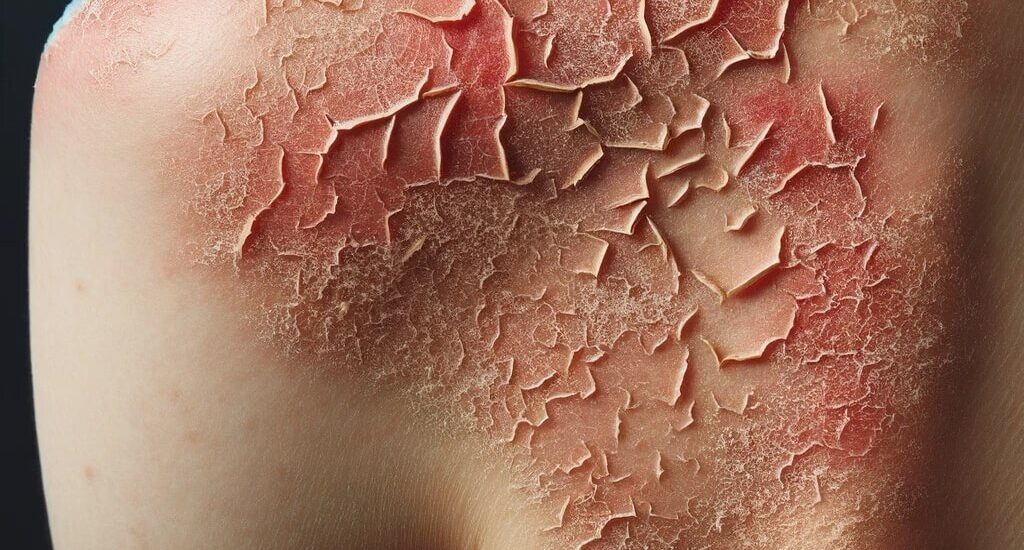This article is designed to thoroughly explain why dry skin after laser tattoo removal occurs and the step-by-step care necessary for effective healing and comfort.

Table of Contents
Understanding Why Dry Skin After Laser Tattoo Removal Occurs
During a laser tattoo removal session, targeted laser energy is used to break down the tattoo ink particles under your skin. This allows your body’s immune system to gradually remove these particles.
The process is somewhat invasive, which means the treated skin area can become dry, tender, and susceptible to peeling as it heals. Dryness and peeling are part of the natural healing process; therefore are considered normal.
How to Take Care of Dry Skin After Laser Tattoo Removal
The instructions below will guide you on how to take care of dry skin after laser tattoo removal.
Immediate Aftercare Following Treatment
Immediately following your laser tattoo removal treatment, aftercare becomes critical. This typically includes gently cleansing the area with soap and water and applying an antibiotic ointment like this Neosporin Original First Aid Antibiotic Bacitracin Ointment from Walmart to prevent infection. A sterile bandage or dressing is also applied to protect the area.
The American Society for Dermatologic Surgery provides detailed aftercare protocols, suggesting these steps help maintain the necessary moisture levels in your skin while protecting against infection.
Keeping the area moist and covered can also help alleviate the sensation of tightness associated with dry skin.
Moisturizing Your Skin
Moisturizing plays a pivotal role in addressing dry skin after laser tattoo removal treatment. The selection of an appropriate moisturizer is key; it should be hypoallergenic and free of fragrances to minimize irritation.
You can get this Cetaphil Health Radiance Renewing Cream from Walmart. It’s both hypoallergenic and fragrance-free.
The National Eczema Association provides guidelines for choosing effective moisturizers, particularly recommending creams and ointments over lotions due to their higher oil content, which is more effective in trapping moisture in the skin.
You need to apply moisturizer multiple times a day, especially after washing the area, to ensure that your skin remains hydrated and to promote healing.
Long-Term Skin Care
Long-term care is essential for the continued recovery of your skin. This includes maintaining a good hydration routine, not just topically with moisturizers, but also internally by drinking plenty of water.
Sun protection is vital as the skin is more vulnerable to UV damage after laser treatments. The Skin Cancer Foundation underscores the importance of using a broad-spectrum sunscreen with an SPF of 30 or higher to protect the skin from sun damage.
This Cetaphil Sheer Mineral Sunscreen Lotion for Face & Body is available at Walmart.
In addition, avoid harsh chemicals or exfoliants on the treated area until it has fully healed.
Check out these other articles…
Should You Pop Blisters After Laser Tattoo Removal? Answered
How to Prevent Blisters After Laser Tattoo Removal: Pro Tips
How to Care for Skin After Laser Tattoo Removal: Easy Guide
Skin Texture Change After Laser Tattoo Removal: Quick Guide
How to Treat a Tattoo After Laser Removal: Complete Guide
Does Tattoo Continue to Fade After Laser Treatment? Answered
Recognizing When to Seek Medical Advice
It’s crucial to be vigilant for any signs of complications. While dryness is expected, extreme skin reactions may be indicative of an infection or an allergic reaction. Signs to watch for include excessive redness, swelling, blistering, or pus.
Seek medical attention if you experience these symptoms, as they may necessitate treatment with prescription medication or other interventions. Always err on the side of caution and contact your dermatologist if you’re unsure about any aspect of your post-treatment condition.

